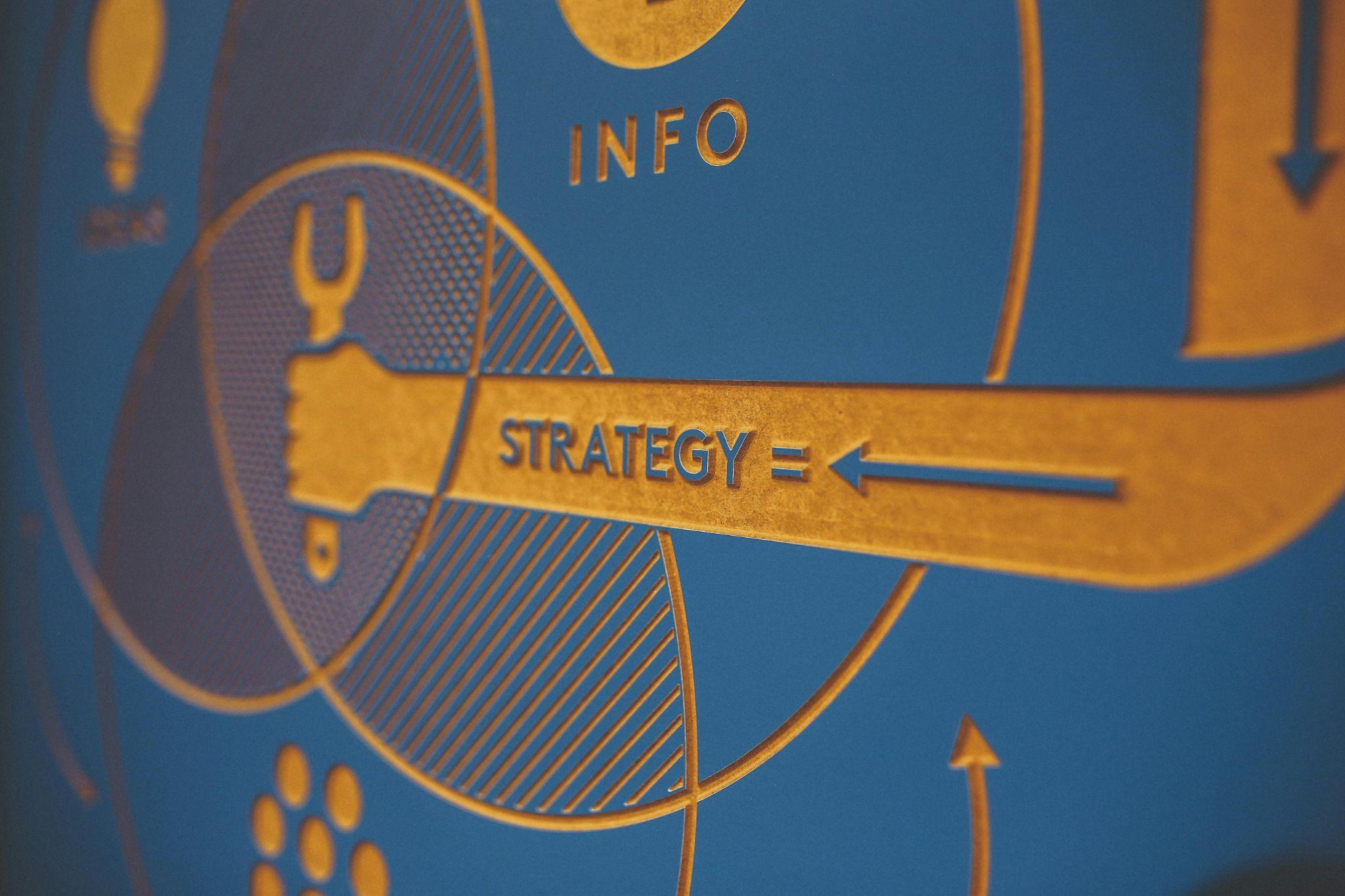Neuromarketing tactics have revolutionized how businesses understand and influence online consumer behavior, tapping into the subconscious mind to drive purchasing decisions through scientifically-backed psychological principles. In 2024, the Neuromarketing Market size was estimated at USD 1.56 billion, reflecting the growing recognition of neuroscience-driven strategies in digital commerce. As e-commerce continues to dominate consumer interactions, understanding how psychology shapes online consumer behavior has become essential for businesses seeking to optimize conversion rates, enhance customer engagement, and build lasting brand loyalty through data-driven insights into the human mind.
The intersection of neuroscience and marketing provides unprecedented access to consumer motivations that traditional market research methods often fail to capture, revealing the hidden drivers behind clicking, purchasing, and brand preference decisions that occur within milliseconds of exposure to digital content.
What Is Neuromarketing and Why It Matters
Neuromarketing represents a groundbreaking approach to understanding consumer behavior by measuring neurological and physiological responses to marketing stimuli, providing objective insights into subconscious reactions that consumers themselves may not fully recognize. This interdisciplinary field combines principles from neuroscience, psychology, and marketing to understand consumer behavior and create more effective marketing strategies, enabling businesses to decode the complex neural pathways that influence purchasing decisions in digital environments.
Defining Neuromarketing
Neuromarketing science utilizes advanced neuroscience technologies including electroencephalography (EEG), functional magnetic resonance imaging (fMRI), eye-tracking systems, and biometric sensors to measure brain activity, emotional arousal, and physiological responses to marketing content. These sophisticated tools capture real-time data on how consumers process visual elements, emotional triggers, color schemes, and messaging frameworks at the neurological level, providing insights that bypass the limitations of self-reported preferences and conscious biases.
The core concept revolves around accessing subconscious responses that occur before rational thought processes engage, revealing authentic emotional reactions to brands, products, and marketing messages that often contradict what consumers claim to prefer in traditional surveys and focus groups.
The Business Value of Neuromarketing
Neuromarketing benefits extend far beyond traditional marketing metrics, delivering measurable improvements across multiple business dimensions:
- Enhanced ad targeting precision – Neural data reveals which demographic segments respond most strongly to specific visual and emotional elements
- Increased conversion rates – Optimization based on subconscious triggers can improve purchase completion rates by 20-40%
- Stronger brand loyalty development – Emotional connection measurement helps build long-term customer relationships
- Reduced marketing waste – Neurological feedback eliminates guesswork in campaign design and budget allocation
- Competitive advantage creation – Scientific insights provide strategic advantages over competitors relying on traditional methods
- Risk reduction in product launches and campaigns through pre-market neurological testing
Key Psychological Principles Behind Consumer Decisions
Consumer psychology principles form the foundation of effective neuromarketing strategies, with decades of behavioral research revealing consistent patterns in how humans process information, evaluate options, and make purchasing decisions in digital environments. Understanding these psychological mechanisms enables marketers to design experiences that align with natural cognitive processes rather than fighting against them.
Emotional Triggers and Brand Connection
Emotional triggers serve as the primary drivers of consumer behavior, with neuroscience research demonstrating that emotions influence decision-making more powerfully than rational analysis. Emotional triggers are subconscious cues that influence decision-making, often bypassing rational thought, creating immediate connections between brands and consumers through carefully crafted sensory experiences.
Brand emotional connection strategies leverage specific psychological triggers including nostalgia (connecting to positive memories), exclusivity (appealing to status desires), urgency (activating loss aversion), and social belonging (triggering community needs). Companies like Apple successfully utilize minimalist design and premium positioning to trigger feelings of sophistication and innovation, while Amazon employs urgency indicators and social proof elements to accelerate purchase decisions.
Cognitive Biases That Drive Click-Throughs
Cognitive biases represent systematic deviations from rational decision-making that consistently influence online consumer behavior:
- Anchoring bias – Initial price presentations heavily influence perceived value of subsequent offers
- Social proof bias – Customer reviews, ratings, and testimonials drive trust and credibility assessments
- Scarcity bias – Limited availability creates urgency and increases perceived desirability
- Authority bias – Expert endorsements and professional recommendations carry disproportionate weight
- Loss aversion bias – Fear of missing opportunities motivates faster decision-making than potential gains
- Confirmation bias – Consumers seek information that supports pre-existing beliefs and preferences
- Halo effect – Positive impressions in one area influence overall brand perception across categories
Top Neuromarketing Techniques for Online Marketing

Advanced neuromarketing techniques employ cutting-edge neuroscience technologies to measure and analyze consumer responses with unprecedented precision and objectivity. These scientific methods provide quantifiable data on emotional engagement, cognitive load, attention patterns, and subconscious preferences that traditional market research approaches cannot access.
Eye-Tracking and Visual Focus
Eye-tracking technology measures precise gaze patterns, fixation duration, and visual attention distribution across digital interfaces, revealing which elements capture attention, maintain engagement, and drive action. This technique optimizes website layouts, advertisement placement, and content hierarchy by identifying the most influential visual zones and eliminating distracting elements that reduce conversion effectiveness.
| Eye-Tracking Tool | Key Features | Best Use Cases | Price Range |
|---|---|---|---|
| Tobii Pro Lab | High precision tracking, heat maps, gaze plots | Website optimization, ad testing | $15,000-50,000 |
| EyeQuant | AI-powered attention prediction, instant analysis | Quick design validation, A/B testing | $500-2,000/month |
| Sticky by UsabilityHub | Simple click tracking, affordable testing | Small business optimization | $99-299/month |
| RealEye | Webcam-based tracking, remote testing capability | Budget-conscious research | $99-899/month |
Facial Expression & Emotion Analysis
Facial expression analysis utilizes computer vision and machine learning algorithms to decode micro-expressions, emotional states, and engagement levels from facial movements during content consumption. This technology measures authentic emotional responses to video advertisements, product presentations, and interactive content without requiring conscious participant feedback.
- Emotion recognition software – Affectiva, Microsoft Emotion API, and Google Cloud Vision detect happiness, surprise, anger, disgust, fear, and sadness
- Engagement metrics – Attention levels, emotional intensity, and valence (positive/negative) scoring
- Real-time analysis – Instant feedback during live content consumption for immediate optimization
- Demographic insights – Age and gender-specific emotional response patterns
- Cross-cultural validation – Emotion recognition across different ethnic and cultural groups
EEG and Brainwave Monitoring
Electroencephalography (EEG) technology measures electrical activity in the brain to assess cognitive workload, emotional arousal, and memory encoding during marketing exposure. EEG provides insights into subconscious processing that occurs before conscious awareness, enabling optimization of messaging timing, complexity, and emotional intensity for maximum neurological impact.
Brainwave monitoring applications include attention measurement during video content, cognitive load assessment for website navigation, and memory formation analysis for brand recall optimization in digital campaigns.
Galvanic Skin Response (GSR)
Galvanic Skin Response measurement detects changes in skin conductance that indicate emotional arousal, stress levels, and psychological engagement during marketing interactions. GSR sensors identify moments of peak emotional intensity, helping marketers understand which content elements generate the strongest subconscious responses and optimize accordingly.
Typical GSR applications encompass e-commerce checkout process optimization, emotional advertising effectiveness measurement, and user experience stress point identification across digital touchpoints.
Applying Neuromarketing in Digital Channels
Digital neuromarketing implementation requires strategic integration of neuroscience insights across multiple online touchpoints, from initial brand awareness through conversion and retention phases. Successful application combines multiple measurement techniques with rapid iteration cycles to continuously optimize psychological impact and business outcomes.
Optimizing Website Design & UX
Website optimization through neuromarketing leverages psychological principles to reduce cognitive friction, enhance emotional engagement, and guide visitors toward desired actions through scientifically-validated design decisions.
- Color psychology optimization – Blue builds trust and professionalism, red creates urgency and excitement, green suggests growth and eco-friendliness
- Layout hierarchy design – F-pattern and Z-pattern eye movement optimization for content placement
- Cognitive load reduction – Simplified navigation, reduced choice paradox, progressive disclosure techniques
- Emotional design elements – Human faces increase trust, positive imagery triggers approach behavior
- Neuroscience-based CTAs – Action-oriented language, contrasting colors, optimal button sizing and placement
- Trust signal positioning – Security badges, testimonials, and guarantees placed in high-attention zones
Crafting Emotion-Driven Ad Copy
Emotional advertising copy utilizes psychological triggers and linguistic techniques to activate specific neural responses that drive engagement, recall, and conversion through scientifically-optimized word selection and message structure.
| Power Word Category | Emotional Effect | Example Words | Neurological Response |
|---|---|---|---|
| Urgency Triggers | Fear of missing out, time pressure | Limited, Exclusive, Ending Soon | Activates stress response, accelerates decisions |
| Achievement Words | Self-actualization, success desire | Transform, Achieve, Master | Triggers reward anticipation centers |
| Safety Language | Security, risk reduction | Guaranteed, Proven, Trusted | Reduces anxiety, builds confidence |
| Exclusivity Terms | Status elevation, belonging | Elite, Premium, Members-Only | Appeals to social hierarchy needs |
| Sensory Descriptors | Vivid mental imagery | Smooth, Crisp, Luxurious | Engages multiple brain regions |
Designing High-Converting Landing Pages
High-converting landing page design combines multiple neuromarketing principles into cohesive experiences that guide visitors through optimized psychological journeys from initial attention to final conversion.
- Hero section optimization – Clear value proposition, compelling headline, supporting visual within 3-second attention span
- Social proof integration – Customer testimonials, review scores, user counts positioned prominently
- Cognitive flow design – Logical progression from problem identification through solution presentation to action
- Trust element placement – Security indicators, guarantees, and credibility markers in high-attention zones
- Emotional resonance creation – Benefit-focused copy, aspirational imagery, success visualization techniques
- Friction elimination – Simplified forms, minimal required fields, instant gratification elements
- Mobile-first neurological optimization – Thumb-friendly tap targets, reduced cognitive load for smaller screens
Ethical Considerations and Best Practices

Ethical neuromarketing practices require careful balance between effective persuasion and consumer respect, ensuring that psychological insights enhance rather than exploit customer relationships. This research investigates the ethical and privacy issues arising from using AI and ML in neuromarketing, highlighting the growing importance of responsible implementation as neuroscience capabilities advance.
Avoiding Manipulative “Dark Patterns”
Dark patterns represent deceptive user interface designs that trick consumers into unintended actions through psychological manipulation rather than genuine value creation. Ethical neuromarketing avoids these exploitative techniques while still leveraging legitimate psychological principles.
- Subscription traps – Hidden recurring charges, difficult cancellation processes
- Bait and switch – Advertising one product while selling another
- Forced continuity – Automatic renewals without clear disclosure
- Hidden costs – Additional fees revealed only at checkout completion
- Confirm-shaming – Guilt-inducing language for declining offers
- Misleading urgency – False scarcity claims and artificial time pressure
Transparency and Consumer Trust
Consumer trust building through ethical neuromarketing requires honest communication about data collection, clear value exchanges, and respect for customer autonomy in decision-making processes.
Trust-building strategies include explicit consent for data collection, transparent privacy policies, honest advertising claims, easy opt-out mechanisms, secure data handling practices, and genuine customer service commitment that prioritizes long-term relationships over short-term conversions.
Measuring Neuromarketing Success
Neuromarketing measurement frameworks combine traditional business metrics with neuroscience-specific indicators to provide comprehensive assessment of psychological impact and commercial effectiveness. Successful measurement requires both immediate neurological responses and longer-term behavioral outcomes to validate the connection between brain activity and business results.
Behavioral Metrics to Track
Key behavioral indicators demonstrate the real-world impact of neuromarketing optimization across the customer journey. Traditional metrics gain enhanced meaning when correlated with neurological data, revealing the psychological mechanisms driving observable business outcomes.
Conversion rate improvements, click-through rate increases, time-on-page extensions, bounce rate reductions, cart abandonment decreases, and customer lifetime value growth provide concrete evidence of neuromarketing effectiveness when compared to baseline performance before optimization implementation.
Neuroscience-Backed KPIs
Neuroscience performance indicators offer unique insights into the psychological processes underlying consumer behavior, enabling more precise optimization and prediction of future marketing effectiveness.
| Measurement Tool | Primary Metric | Business Application | Expected Correlation |
|---|---|---|---|
| Eye-tracking | Visual attention duration | Ad placement optimization | Higher attention = increased recall |
| EEG monitoring | Cognitive engagement levels | Content complexity optimization | Optimal engagement = better conversion |
| Facial coding | Emotional intensity scores | Creative testing and refinement | Positive emotions = stronger purchase intent |
| GSR sensors | Arousal peak identification | Moment optimization in videos | Higher arousal = increased memorability |
| fMRI scanning | Neural activation patterns | Long-term brand building | Reward center activation = loyalty potential |
Integrating Neuromarketing with Traditional Marketing

Hybrid marketing approaches combine neuroscience insights with established marketing methodologies to create comprehensive understanding of consumer behavior that neither approach could achieve independently. Integration maximizes the strengths of both scientific measurement and human intuition in marketing strategy development.
Combining Surveys with Biometric Data
Multi-modal research integration provides both explicit conscious feedback and implicit subconscious responses, revealing discrepancies between stated preferences and actual neurological reactions that often explain unexpected market behaviors.
Integration advantages:
- Comprehensive insight development – Conscious and subconscious response correlation
- Validation of stated preferences – Identifying genuine vs. socially desirable responses
- Deeper behavioral understanding – Explaining the “why” behind consumer choices
Implementation challenges:
- Increased research complexity – Multiple data streams require sophisticated analysis
- Higher costs – Biometric equipment and expertise increase budget requirements
- Longer timeline requirements – Additional data collection and integration processes
A/B Testing Enhanced with Neurometric Insights
Neurometric A/B testing combines traditional split-testing methodologies with real-time neurological measurement to understand not just which variation performs better, but why specific elements generate superior psychological responses.
- Hypothesis development based on neurological principles and behavioral psychology research
- Test design creation incorporating biometric measurement capabilities alongside conversion tracking
- Neurological baseline establishment through pre-test measurement of existing content performance
- Parallel testing execution with both conversion metrics and neurological response capture
- Integrated analysis combining behavioral outcomes with psychological process insights
- Optimization implementation based on both performance and neurological response data
- Continuous refinement through ongoing neurometric monitoring and adjustment
Future Trends in Neuromarketing
Emerging neuromarketing technologies promise even more sophisticated understanding of consumer psychology, with artificial intelligence, virtual reality, and advanced brain imaging creating unprecedented opportunities for personalization and emotional connection. It is expected to reach USD 3.56 billion in 2032, growing at a CAGR of 8.87% over the forecast period (2024-32), indicating significant investment in next-generation neuroscience applications.
AI-Driven Subconscious Personalization
Artificial intelligence personalization leverages machine learning algorithms to analyze individual neurological patterns and customize marketing content in real-time based on each consumer’s unique psychological profile and emotional state. This technology enables dynamic content adaptation that responds to subtle changes in user engagement, attention patterns, and emotional responses during digital interactions.
AI personalization capabilities include predictive emotional state analysis, content complexity adjustment based on cognitive load assessment, timing optimization for maximum receptivity, and individual bias pattern recognition for targeted persuasion strategy development.
VR/AR and Immersive Emotional Testing
Virtual and augmented reality testing environments create controlled yet realistic scenarios for measuring consumer responses to products, experiences, and brand interactions before costly real-world implementation. These immersive technologies enable neurological measurement in simulated shopping environments, virtual product trials, and realistic brand experience testing.
Immersive testing applications encompass virtual showroom optimization, augmented reality product placement testing, immersive advertisement effectiveness measurement, virtual event engagement analysis, and realistic customer journey simulation with neurological feedback at each touchpoint.
Conclusion
Neuromarketing tactics represent a fundamental shift toward scientific understanding of consumer psychology, enabling businesses to create more effective, ethical, and emotionally resonant digital experiences through evidence-based optimization rather than intuitive guesswork. The integration of neuroscience insights with traditional marketing approaches provides unprecedented opportunities to understand and influence online consumer behavior while respecting customer autonomy and building genuine trust.
As technology continues advancing and ethical frameworks develop, neuromarketing will become increasingly accessible to businesses of all sizes, democratizing access to psychological insights that were previously available only to large corporations with substantial research budgets. The key to successful implementation lies in balancing scientific rigor with ethical responsibility, using these powerful tools to enhance customer experiences rather than exploit psychological vulnerabilities, ultimately creating win-win relationships that benefit both businesses and consumers through deeper understanding and more authentic connections.



